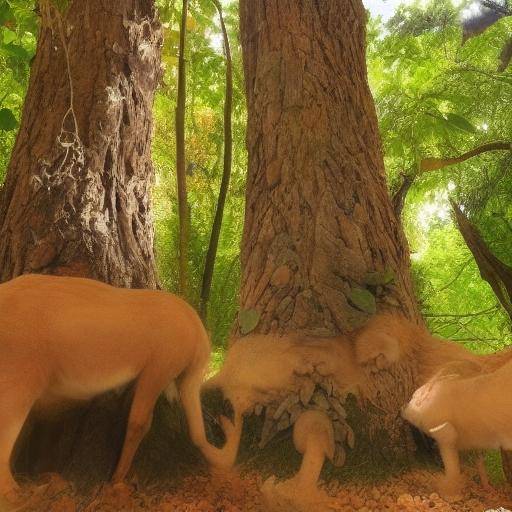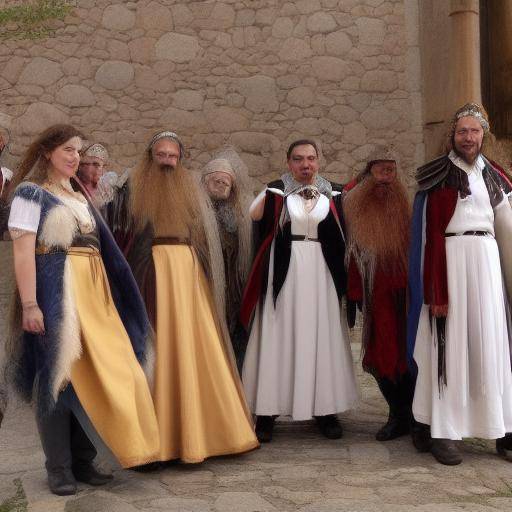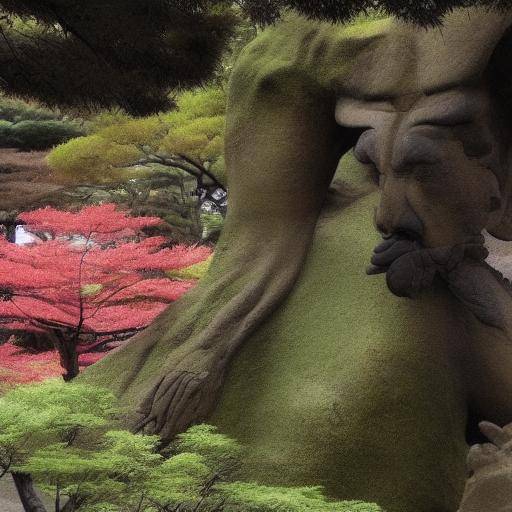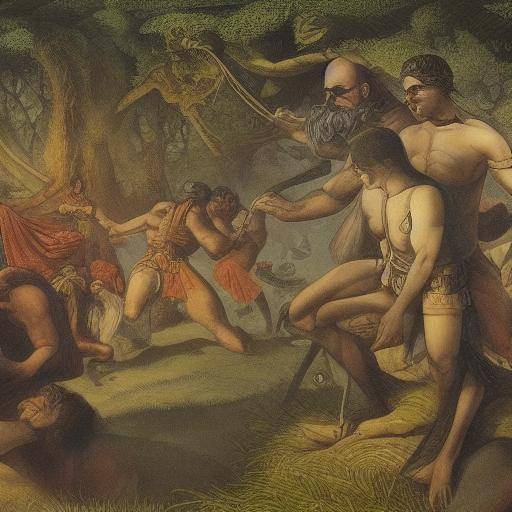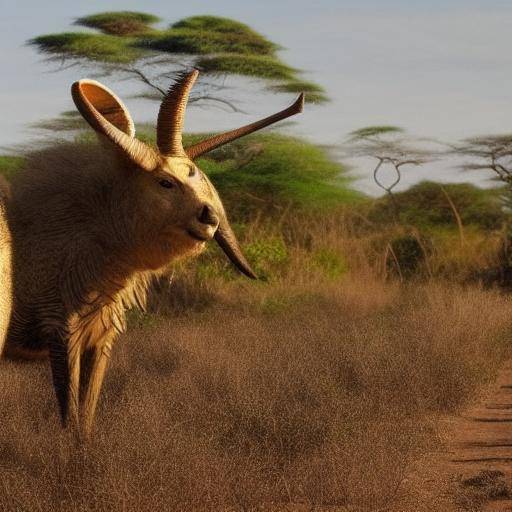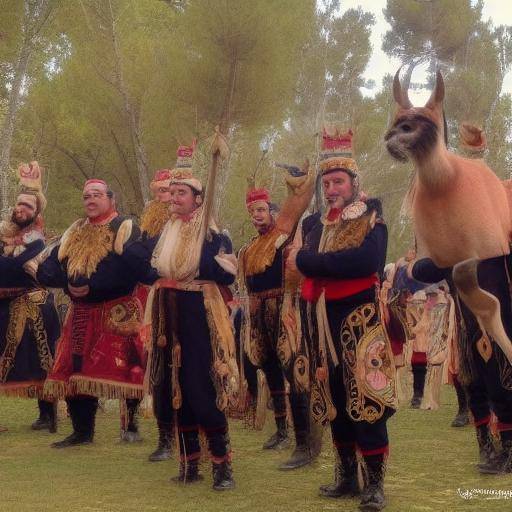
Introduction
In the immense and magical world of Scandinavian folklore, forest beings occupy a central place. These creatures, full of mystery and charm, are part of the legends, myths and traditions of the Nordic peoples. In this article, we will explore in detail the fascinating presence of forest beings in Scandinavian folklore, their relationship with nature and the mysteries surrounding their existence.
History and Background
Scandinavian folklore has its roots in the ancestral beliefs of the Nordic peoples, whose lives were strongly linked to nature and forests that dominated their environment. In these ancient cultures, the beings of the forest were venerated as guardians of nature and were given mystical powers. From the dawn of history, Scandinavian folklore has narrated stories of beings like elves, fairies, trolls and other magical beings that inhabited the forests, showing their deep respect for the land and its mysteries.
Over the centuries, Scandinavian folklore has evolved, but the presence of forest beings has endured. These mythical creatures have been the subject of countless stories, poems and songs. Its influence has also spread to other cultural manifestations, such as art and literature, becoming a distinguishing element of the Nordic identity.
A Deep Analysis
The deep link between the beings of the forest and nature in Scandinavian folklore has been the subject of deep analysis. Reverence towards nature, an essential feature of these stories, is now resonating, inspiring movements for the preservation of the environment. In addition, this holistic approach to nature has raised renewed interest in ancestral wisdom and the connection between human beings and their natural environment.
As Scandinavian folklore has transcended borders, its influence has expanded. The global interest in these stories has led to a greater appreciation of forest beings and their message about the importance of respecting and caring for the planet. In this sense, Scandinavian folklore and its forest beings are not only a cultural legacy, but also a source of inspiration for the protection of the environment.
Detail
It is crucial to understand that Scandinavian folklore not only narrates the prowess of forest beings, but also offers lessons on the interaction between human beings and nature. The reverence of forests, rivers and mountains is reflected in the Nordic traditions, conveying a profound wisdom about the importance of living in harmony with the natural environment.
In this context, it is essential to explore how these ancestral stories can bring valuable insights into the modern era. Respect for nature, promoted by Scandinavian folklore, serves as a timely reminder at a time when conservation of the environment and sustainability are issues of vital importance at the global level.
Comparative analysis
By comparing the beings of the forest of Scandinavian folklore with other traditions of the world, we reveal similarities and differences that enrich our understanding of these mythical figures. While in some cultures the beings of the forest are seen as benevolent protectors, in others they are feared as capricious entities. These variations in beliefs show the diversity of interpretations that human beings have about nature and its mystical inhabitants.
In addition, in analyzing the specific characteristics of forest beings in Scandinavian folklore, there is an exciting wealth of details that transports us to a world of fantasy and wonder. The meticulous description of these beings in the Nordic stories and traditions evidences the attention to the details and creativity that has characterized these narratives over the centuries.
Practical Tips and Accessible Recommendations
For those interested in exploring more deeply the world of forest beings in Scandinavian folklore, here are a series of practical tips. From the reading of classical works of Nordic literature to participation in outdoor activities that connect us with nature, there are numerous ways to immerse yourself in this fascinating universe.
Councils:
- Recommended reading: Explore the works of classic authors like Hans Christian Andersen and the Grimm brothers, whose stories include beings from the forest of Scandinavian tradition.
- Visits to emblematic sites: Plan trips to Scandinavian regions known for their forests and natural landscapes, in search of the footprint of mythical beings.
- Participation in festivals and celebrations: Investigate traditional festivals where people of the forest pay homage as part of the region's living culture.
Sector Perspectives and Views of Experts
To further enrich our understanding of the beings of the forest in Scandinavian folklore, we have gathered opinions from experts in Nordic mythology and folklore. These perspectives provide valuable information about the relevance of these figures today, as well as their impact on culture and environmental awareness.
According to the well-known researcher of Scandinavian mythology, Maria Lundgren, "the beings of the forest in Scandinavian folklore represent a lost connection with nature that so many people want to recover today. His stories remind us of the importance of respecting and caring for our natural environment, keeping alive an ancestral wisdom that remains relevant in the contemporary world."
These expert perspectives offer a broad and fascinating view of the meaning and significance of forest beings in Scandinavian folklore, illustrating their ability to inspire and guide the modern world.
Cases and Applications in Real Life
To understand more specifically how narratives about forest beings in Scandinavian folklore can influence everyday life, we present here practical cases that illustrate their impact in different contexts. These real stories reveal how the principles and teachings of these ancient traditions can have tangible effects today.
Case: Forest restoration
In Sweden, a non-profit organization has taken the spirit of Scandinavian folklore as inspiration for its work of restoration of endangered forests. Inspired by the idea of preserving the homes of forest beings, this group has managed to mobilize the local community in the protection of threatened natural areas.
Future Trends and Predictions
Looking into the future, the stories of forest beings in Scandinavian folklore continue to capture the imagination of people around the world. The growing awareness of the importance of the conservation of nature has renewed interest in these mythical figures. This trend suggests that Scandinavian folklore will continue to influence the way we relate to nature and promote the protection of our environment.
Predictions based on current cultural trends and environmental movements indicate that Scandinavian folklore, and in particular forest beings, will maintain their relevance as a source of inspiration and reflection on the relationship between human beings and nature.
Conclusions
In short, the beings of the forest in Scandinavian folklore represent an invaluable cultural legacy that continues to captivate humanity. These mythical figures not only nourish our imagination, but also offer valuable lessons on the importance of caring for and respecting nature. Through the stories and traditions we have explored in this article, the deep connection between Scandinavian folklore, the beings of the forest and nature is evident. Its influence remains today, serving as a constant reminder of the importance of preserving our natural environment and preserving the wealth of Mother Earth.
Frequently asked questions
1. What are some of the best known forest beings in Scandinavian folklore?
In Scandinavian folklore, there are beings such as elves, fairies, trolls, norns and other magical beings that inhabit forests and nature.
2. Why are the beings of the forest important in Scandinavian folklore?
The beings of the forest represent a deep connection with nature and transmit teachings on respect and reverence towards the natural environment, fundamental aspects in the Nordic and global culture.
3. How has Scandinavian folklore influenced with its forest beings in environmental awareness?
Scandinavian folklore, through his stories on forest beings, has contributed to inspiring movements for the preservation of the environment and has promoted greater awareness of the importance of nature in human life.
4. Are there celebrations or festivals today that pay tribute to the beings of the forest in Scandinavian folklore?
Yes, in some Scandinavian regions there are traditional festivals that honor the beings of the forest, keeping alive the rich culture of folklore and its connection to nature.
5. What lessons can we learn from the stories of forest beings in Scandinavian folklore?
The stories of forest beings convey valuable lessons on the importance of living in harmony with nature, respect for the natural environment and the connection between human beings and the earth.
6. How does Scandinavian folklore relate to the conservation of forests and natural areas today?
Scandinavian folklore has inspired forest conservation initiatives and natural areas, serving as a source of inspiration for the preservation of ecosystems and the promotion of environmental sustainability.
With these frequent questions, efforts have been made to address the most recurring concerns about forest beings in Scandinavian folklore, offering detailed answers to enrich the understanding of this fascinating theme.
With this article, we have unveiled the eternal fascination that the beings of the forest in Scandinavian folklore exert over people, as well as their relevance today. Through this journey through Nordic mythology, we have explored how the stories of these mythological beings continue to inspire, educate and move those who seek connection with nature and ancestral traditions.
We hope that this analysis has helped to increase knowledge and appreciation for the beings of the forest in Scandinavian folklore, as well as to highlight its importance in preserving the rich cultural and environmental heritage that these mythological beings contain.
With this article, deeply rooted in the Nordic traditions, it has been persecuted to convey not only knowledge, but also a sense of closeness and respect for nature and its mysteries, aspiring that readers feel the same fascination and admiration for these beings in the forest that have captivated entire generations throughout history.

